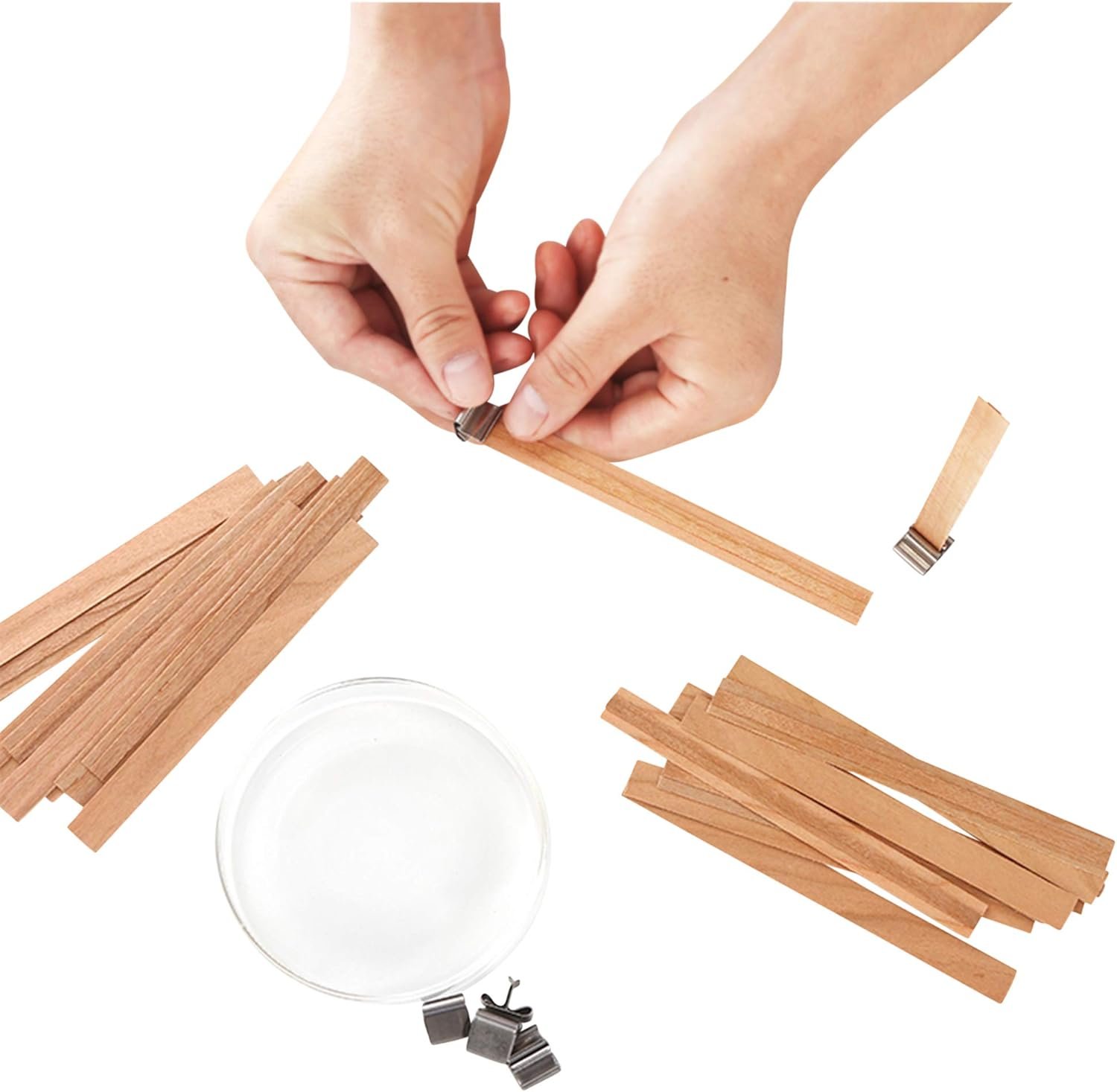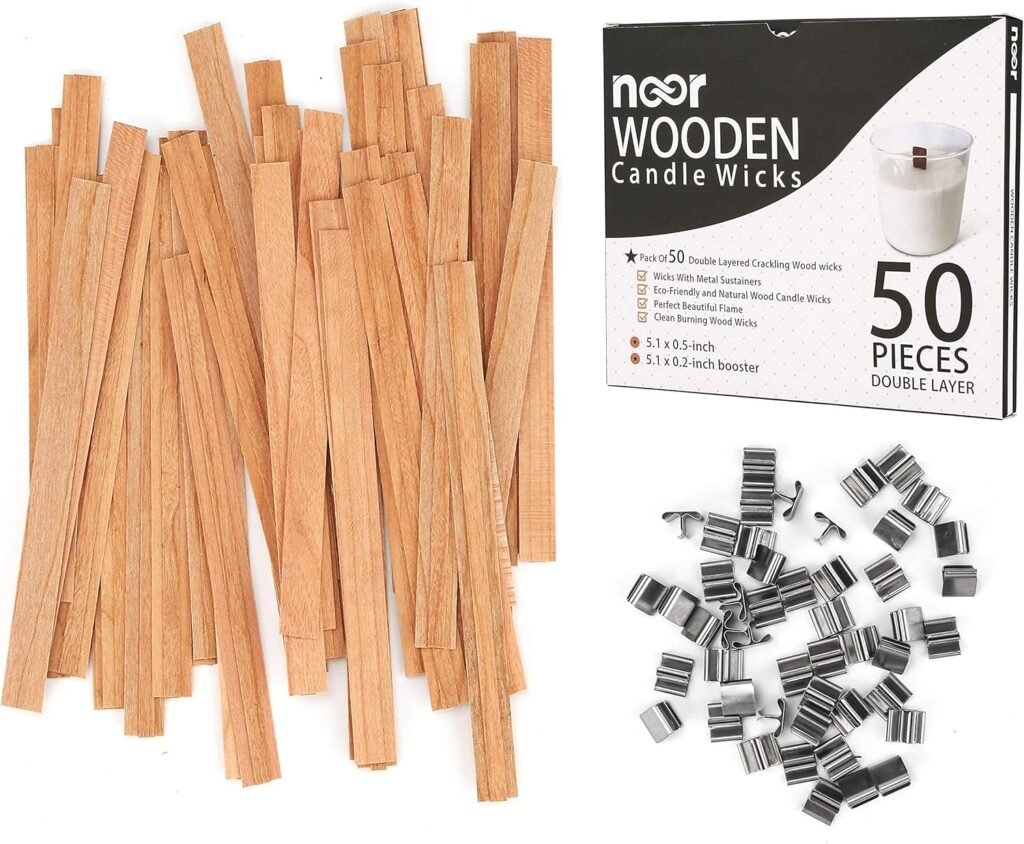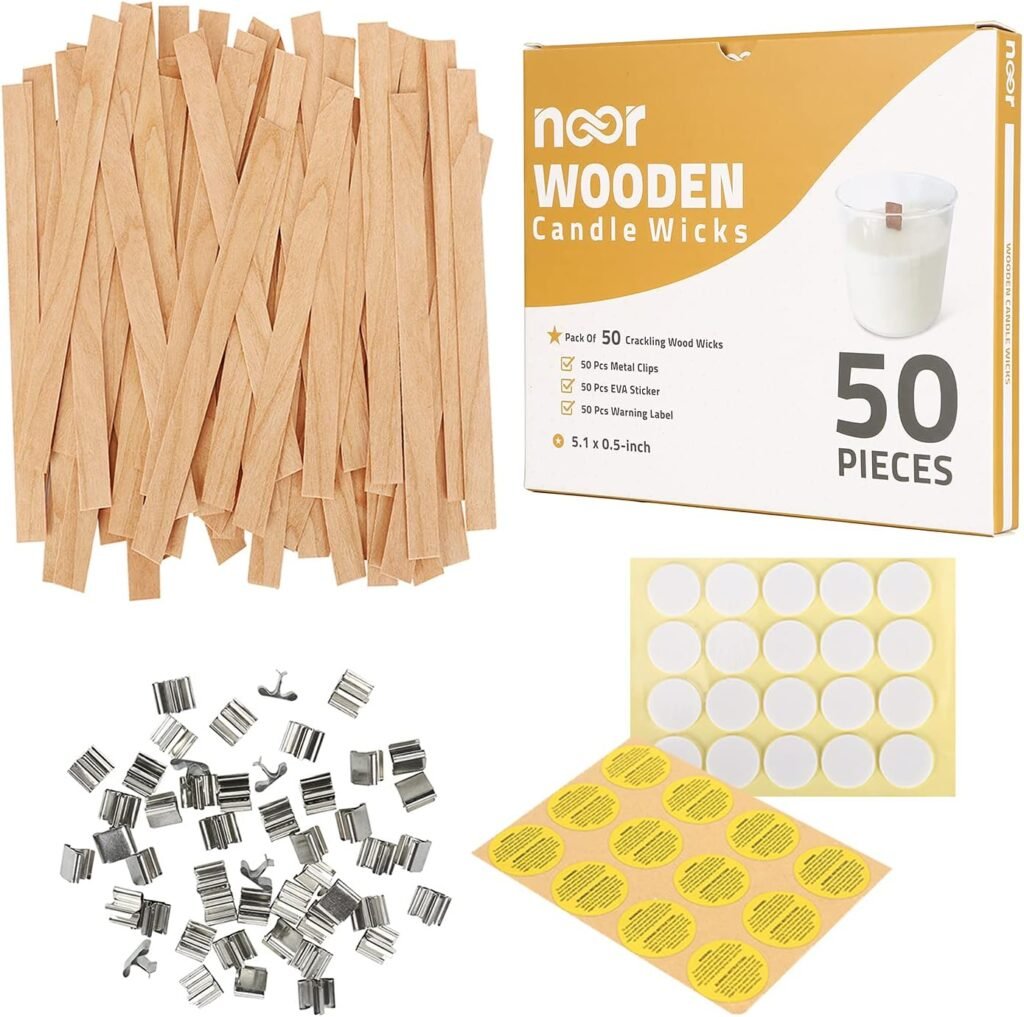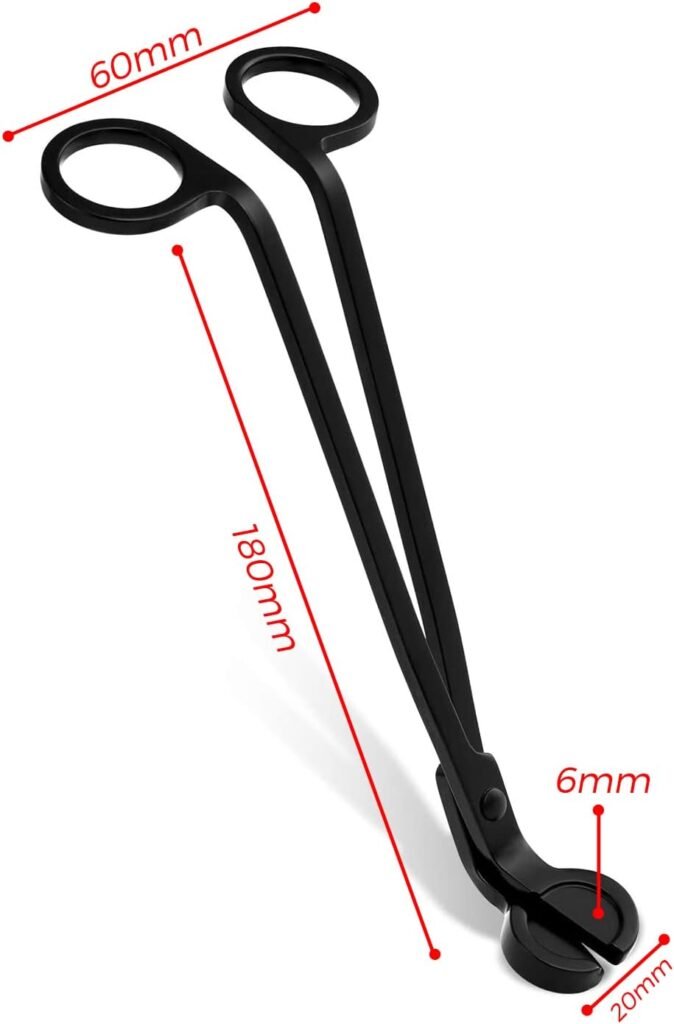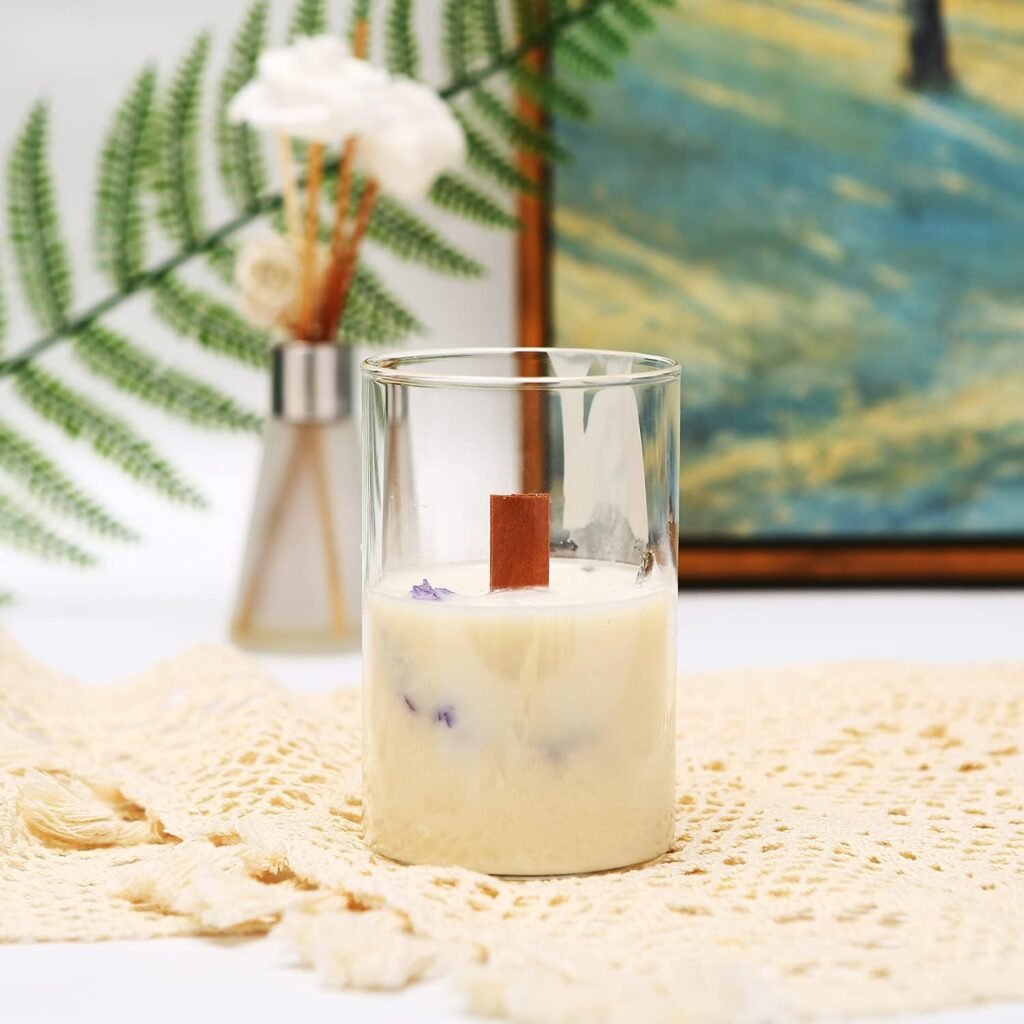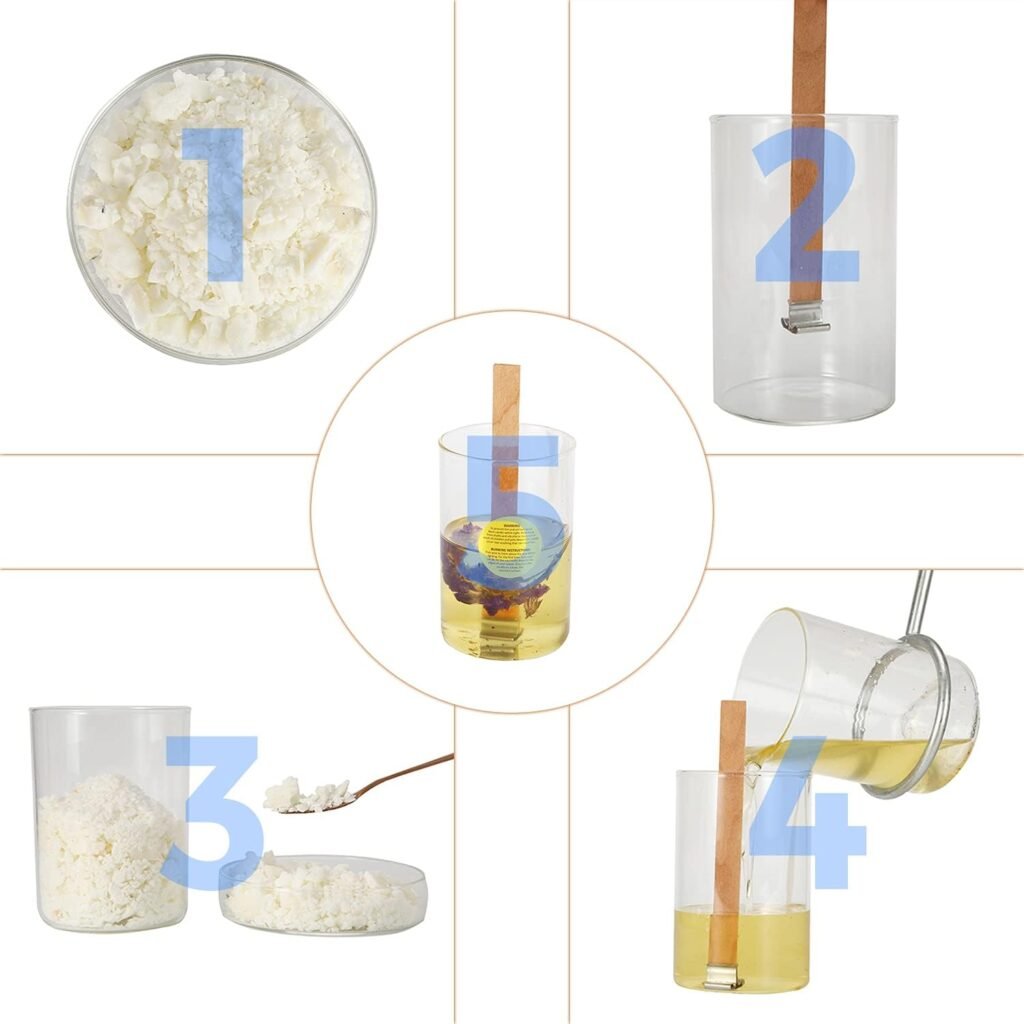Have you been searching for a wooden wick that gives your candles a clean burn and that cozy crackling sound without the hassle?
Product Overview: NOOR 50 Wooden Wicks for Candle Making – Double Layer Crackling Wood Wicks with Metal Clips – Smokeless, Eco-Friendly, Ideal for Soy Wax & DIY Candle Projects
You’ll find that the NOOR 50 Wooden Wicks pack is designed to simplify candle making while adding a premium feel to your finished candles. This overview highlights what’s in the box, the materials used, and the biggest selling points that matter to you as a maker.
What’s included
You get 50 double-layer wooden wicks pre-attached to metal sustainers. Each wick measures 5.1″ x 0.5″, so you’ll have enough to create a variety of candle sizes without extra preparation.
Key selling points
These wicks are described as smokeless, eco-friendly, and ideal for soy wax and other wax types. The pre-assembled metal bases and crackling sound are the main conveniences that set them apart.
Product Specifications
This section summarizes the essential numbers and attributes so you can confirm whether these wicks match your projects and tools. You’ll want quick, clear specs before committing to a bulk pack.
| Specification | Details |
|---|---|
| Pack Size | 50 wicks with 50 metal sustainers |
| Wick Dimensions | 5.1″ (length) x 0.5″ (width) |
| Material | 100% organic wood (double-layer construction) |
| Compatibility | Soy wax, beeswax, paraffin, blended waxes |
| Burn Characteristics | Smokeless, gentle crackle |
| Prep Required | None (pre-assembled with metal bases) |
| Ideal Use | Containers, jars, DIY candle projects, gifts, events |
First Impressions and Packaging
When you open the box, you’ll likely notice the tidy arrangement and ready-to-use format. The packaging is practical and protects the wooden wicks and clamps, making storage easy until you’re ready to craft.
Unboxing experience
The metal sustainers are already attached, which saves you a step and minimizes fiddling with small parts. You’ll appreciate not needing to glue or assemble anything before the pour.
Condition on arrival
Most users will receive wicks that are straight and undamaged; you should still inspect each one for splits or warps before use. If an item arrives defective, check the seller’s return policy for replacements.
Materials and Sustainability
You’ll want materials that align with eco-conscious crafting, and these wicks are marketed as biodegradable and made from 100% organic wood. Knowing your supplies won’t add toxins to the burn is comforting when you sell or gift candles.
Wood source and construction
The double-layer wooden design aims to improve stability and create a fuller flame and consistent crackle. The organic wood is uncoated and non-toxic, which supports cleaner burning compared to many synthetic options.
Eco-friendly attributes
Biodegradable wood and minimal metal supports mean less environmental impact than some blended wick systems. You should still dispose of remains responsibly and consider recycling or repurposing the metal clips.
Burn Performance and Sound
If you’re after ambiance, the crackling sound of a wooden wick is a major part of the appeal. You’ll want to understand how consistent the flame is and whether soot or smoke will be an issue.
Flame quality
These wicks are designed to produce a clean, smokeless flame with reliable stability in properly matched wax and container sizes. You can expect a steady, short-to-moderate height flame that’s visually appealing.
Crackling experience
The gentle crackle enhances atmosphere without being distracting or loud; it’s similar to a small hearth fire. The sound level depends on the wood grain and the candle’s burn conditions, so individual experience varies.
Compatibility with Wax Types
Knowing which waxes these wicks pair best with will help you plan your recipes. The NOOR wicks are presented as versatile, but match testing is still important for consistent results.
Soy wax
Soy wax typically pairs very well with wooden wicks because of its lower melt pool viscosity and cooler burning temperature. You’ll usually get a good melt pool and consistent flame from soy when you choose the correct wick size and container.
Beeswax and paraffin
These wicks can work with beeswax and paraffin, though beeswax’s higher melt point might require testing different sizes or additional wicks. Paraffin tends to be more forgiving, but you should still test to avoid tunneling or large flames.
Wick Sizing and Container Recommendations
Choosing the right wick size is critical to avoid tunneling or excessive smoking. You’ll save time if you plan your candle diameter, wax type, and expected burn behavior before picking a wick.
Sizing guidelines
Because these wicks are 0.5″ wide and double-layered, they suit small-to-medium container diameters; approximate matches are 2.5″–3.5″ for a single wick and larger containers may require two or more wicks. Always perform a burn test with your exact wax and fragrance load because additives affect burn behavior.
Container considerations
Use containers with straight sides and consistent internal diameter when possible to ensure an even melt pool and consistent flame. Low, wide containers may cause increased soot or faster wax consumption, so you’ll want to adjust wick count accordingly.
Installation and Use
You’ll find that installation is straightforward thanks to the pre-attached metal sustainers. This section walks you through step-by-step placement and pour tips so your first try results in a clean-looking candle.
How to place the wick
Center the metal sustainer in your container and press it to ensure it’s seated on a flat bottom; you can use a dab of hot glue for extra security where necessary. Keep the wick upright and centered, using a wick bar or a pencil to steady it during the pour.
Pour and cure tips
Pour at the wax temperature recommended for your wax type and fragrance load—often between 120°F–140°F for soy blends—to avoid sinkholes and ensure a uniform finish. Allow the candle to cure fully according to wax type (typically 24–72 hours) before the first burn to reduce tunneling.
No Prepping Required — Reality Check
The marketed convenience of “no prepping required” is genuinely helpful, but you should still do a quick pre-burn check. Understanding when no-prep works and when you might optionally prime a wick will improve outcomes.
Pros of pre-assembled wicks
Pre-assembled wicks with metal sustainers save you time and reduce the risk of poor adhesion or crooked placement. You won’t need to glue or attach bases, which speeds up production, especially in larger batches.
When you might still prime
In some high-fragrance or high-additive blends, you may choose to lightly prime or “pre-burn” a wick before final use to reduce initial instability. This isn’t necessary in most cases, but if you see inconsistent strikes or smell a sharper first burn, a controlled trial burn can help.
Troubleshooting Common Issues
Even with good wicks, issues like tunneling, mushrooming, or weak flames happen. You’ll benefit from a few troubleshooting steps to quickly fix problems and reduce waste.
Tunneling solutions
If your candle tunnels, check that your melt pool reached the container edges during the initial burn—if not, try a longer first burn to allow full melt. For future candles, consider a slightly wider wick or two-wick configuration to ensure even wax consumption.
Mushrooming and excess soot
If the wick tips “mushroom” (carbon buildup) or you notice soot, it usually means the wick is too large for the container or the wax load is heavy with fragrance. Trim the wick to 1/4″–3/8″ before each burn and test a smaller wick for future pours.
Safety and Best Practices
Candle making and burning carry risks that are easy to manage when you follow basic safety rules. You should adopt consistent practices to minimize hazards and improve product quality.
Safe candle-making habits
Always melt wax with an accurate thermometer and on a double boiler or controlled heat source to prevent overheating. Keep a fire extinguisher or baking soda nearby when working with hot wax, and never leave candles burning unattended.
Safe burning guidelines
Trim the wick before each burn and avoid burning candles for more than 4 hours at a time to keep the glass cool and prevent heat buildup. Place candles away from drafts, children, and pets, and on heat-resistant surfaces to reduce the risk of accidents.
Performance Comparison: Wooden vs. Cotton Wicks
You may be deciding between wooden and cotton wicks; each has strengths. This comparison helps you weigh the trade-offs for your specific candle style and customer preferences.
| Feature | Wooden Wicks (NOOR) | Cotton Wicks |
|---|---|---|
| Sound | Gentle crackle adds ambiance | Silent burn |
| Smoke/Soot | Typically smokeless when correctly sized | Low soot when well-matched but can produce smoke |
| Visual Aesthetic | Unique, rustic flame look | Classic, minimal appearance |
| Ease of Installation | Pre-assembled sustainers simplify use | May require tab-gluing and centering |
| Compatibility | Great with soy, good with others | Very versatile across wax types |
| Cost | Usually slightly higher per wick | Often cheaper in bulk |
Value and Packaging
You’ll weigh price, quantity, and convenience when choosing wick packs. This section assesses overall value for hobbyists, small-batch makers, and those scaling up.
Cost-effectiveness
Buying a 50-pack gives you a steady supply for multiple projects, and the pre-assembled nature saves time that can be valuable in production runs. If you make candles frequently, the convenience often offsets the slightly higher per-wick cost compared with unassembled options.
Packaging usefulness
The compact packaging and metal sustainers make storage and transport easier for small businesses or craft workshops. You can label and store them by project or wick size to stay organized.
Recommended Projects and Creative Uses
These wicks are suited to a range of projects beyond standard jar candles, so you’ll find creative ways to incorporate them into themed gifts or events. Pick projects based on wick behavior and container geometry.
Home décor and gifts
Use these wicks in soy jar candles for cozy gifts and seasonal collections; the crackle adds a premium touch that buyers often appreciate. Combine with minimalist labels or rustic packaging for handmade-market appeal.
Events and special occasions
For weddings, parties, or ambient installations, the gentle crackle works well in smaller, controlled settings. Consider outdoor or tented areas where some wind may accentuate the sound but avoid strong drafts that cause uneven burning.
Testing Protocol: How You Should Test These Wicks
You’ll need a consistent test method to choose the right wick and avoid guessing. Repeatable testing reduces returns, unhappy customers, and wasted materials.
Standard burn test
Burn a candle for at least 4 hours on the first fill to establish whether the wick creates a full melt pool that reaches the container edge. Record results like burn time, soot, flame height, and melt pool behavior so you can iterate.
Multiple variables to test
Test each wax blend, fragrance percentage, and container diameter independently because all influence wick performance. Keep notes on ambient temperature and drafts, since those environmental factors affect results too.
Troubleshooting Table
This quick-reference table gives you immediate steps when common issues arise, so you won’t be stuck mid-project.
| Problem | Likely Cause | Quick Fix |
|---|---|---|
| Tunneling | Wick too small or short first burn | Use wider or additional wick; extend first burn |
| Excess soot | Wick too large for container | Trim wick to 1/4″ and test smaller size |
| Weak flame | Poor wick strike or high fragrance load | Ensure priming conditions; test lower fragrance % |
| No crackle sound | Wood grain variation or thin melt pool | Try different wick or adjust wax ratio for larger melt pool |
| Wick falls over | Poor adhesive or uneven bottom | Secure sustainer with hot glue or adhesive |
Maintenance and Storage
You’ll want to store your wicks correctly to keep them performing well over time. The right environment preserves wood integrity and avoids warping.
Storage tips
Keep wicks in a cool, dry place away from direct sunlight and moisture to prevent warping or mold. Store metal sustainers together and avoid heavy stacking that could bend the wood.
Shelf life considerations
Wooden wicks don’t have a strict expiration but will perform best when used within a reasonable timeframe and when kept dry. Check them prior to use for splits or damage, especially if stored for extended periods.
Frequently Asked Questions
You likely have a few specific questions about use and performance; this short FAQ addresses the most common concerns. If you need more details, try a small-scale trial to validate your process.
Can these wicks be trimmed?
Yes—trim the wick to roughly 1/4″ before each burn to control flame size and reduce smoke. Use wire wick trimmers or scissors designed for candle maintenance.
Do they work for pillars?
They can, but pillar candles usually require specialized wick positioning and sometimes a different wood thickness. Test thoroughly with your pillar formula and consider multiple wicks for very large diameters.
Will fragrance oils affect performance?
Fragrance load and type will influence burn characteristics, and heavier fragrance or essential oil blends might need a different wick size. Always test your fragrance percentage and perform several burns before finalizing a recipe.
Final Verdict
If you want an easy-to-use, eco-conscious wick that adds ambiance through a gentle crackling sound, the NOOR 50 Wooden Wicks are a strong choice. You’ll appreciate the pre-assembled sustainers, the clean burn potential, and the convenience for both hobby and small-batch production.
Who should buy these
Purchase these wicks if you make soy candles, sell small-batch custom candles, or want to add a premium feel and sound to your creations. They’re particularly suited to makers who value convenience and sustainability.
When to consider alternatives
Consider cotton or braided wicks if you need a silent flame, very large single-wick containers, or are working with highly viscous wax formulas without time for extensive testing. For those confident in experimenting and matching wick to wax, these are a great option.
Additional Tips for Success
You’ll get the best results by combining careful testing with small changes rather than big leaps. Use these final tips to refine your process and reduce trial-and-error.
- Keep careful notes during burn tests: wax type, fragrance percentage, room temp, and wick behavior.
- Use a wick sticker or small dab of hot glue if your sustainers shift during the pour.
- For larger diameters, calculate where a second wick should go to ensure even melt pools.
- Trim to 1/4″ before each burn and extinguish with a snuffer to avoid splattering.
- If you’re scaling up production, batch-test a dozen candles first to confirm consistency.
If you’d like, you can tell me the container sizes and wax types you plan to use and I’ll suggest probable wick counts and initial test parameters to get you started.
Disclosure: As an Amazon Associate, I earn from qualifying purchases.
